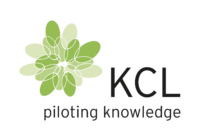Understanding Rheology in Wax Dispersions
Rheology, the study of the flow and deformation of matter, is a critical aspect in the formulation of wax dispersions. In the context of wax dispersions, rheology control ensures that the wax particles are evenly distributed throughout the medium, providing consistent performance and stability. Achieving optimal rheology in wax dispersions is essential for applications that require precise control over viscosity and flow characteristics.
Wax dispersions are commonly used in various industries, including coatings, adhesives, and food packaging. The rheological properties of these dispersions can significantly impact their performance, such as their ability to form a uniform film, their stability over time, and their ease of application. Therefore, understanding and controlling rheology is crucial for developing high-quality wax dispersions.
In wax dispersions, factors such as particle size, concentration, and the type of stabilizer used can influence rheological behaviour. By carefully selecting and optimizing these parameters, it is possible to achieve the desired rheological properties that meet specific application requirements.
Why Choose KCL Technology for Wax Dispersions?
KCL technology offers a unique approach to achieving optimal rheology in wax dispersions. Our KCL Biowax is a water-based dispersion of natural wax, stabilized by microfibrillated cellulose (MFC). The MFC not only improves stabilization but also creates optimal rheology for the dispersion, acting as an adhesion promoter towards any biobased surface.
One of the key advantages of using KCL technology is its ability to provide consistent and reliable rheology control. The MFC in our formulation enhances the stability of the wax dispersion, preventing sedimentation and ensuring a uniform distribution of wax particles. This results in a stable and homogenous dispersion that maintains its rheological properties over time.
Additionally, our wax formulation is safe to use and FDA approved for food contact applications. It is also classified outside of the single-use plastic directive (SUP), offering a sustainable solution for natural hydrophobization. By choosing KCL technology, you can achieve optimal rheology in your wax dispersions while adhering to safety and environmental standards.
Step-by-Step Guide to Achieving Optimal Rheology
Achieving optimal rheology in wax dispersions with KCL technology involves several key steps. Here is a step-by-step guide to help you get started:
1. Select the Right Wax: Choose a natural wax that meets your specific application requirements. Consider factors such as melting point, hardness, and compatibility with other formulation components.
2. Prepare the Dispersion Medium: Use water as the dispersion medium and ensure it is free from impurities. The quality of the water can impact the stability and rheology of the final dispersion.
3. Add Microfibrillated Cellulose (MFC): Incorporate MFC into the dispersion medium to stabilize the wax particles. The MFC will enhance the rheological properties and prevent sedimentation.
4. Disperse the Wax: Use appropriate dispersion techniques, such as high-shear mixing or ultrasonic dispersion, to evenly distribute the wax particles in the medium. Ensure that the wax is fully dispersed and no agglomerates are present.
5. Optimize Rheology: Adjust the concentration of wax and MFC to achieve the desired rheological properties. Conduct rheological testing to evaluate the viscosity, flow behaviour, and stability of the dispersion.
6. Test and Validate: Perform application-specific tests to ensure that the wax dispersion meets the required performance criteria. Make any necessary adjustments to the formulation to achieve optimal results.
Common Challenges and Solutions
While achieving optimal rheology in wax dispersions can be challenging, understanding common issues and their solutions can help you overcome these obstacles. Here are some common challenges and how to address them:
Sedimentation: Sedimentation occurs when wax particles settle at the bottom of the dispersion. To prevent this, ensure that the MFC concentration is sufficient to stabilize the particles. Additionally, use high-shear mixing techniques to achieve a uniform dispersion.
Agglomeration: Agglomeration happens when wax particles clump together, leading to an uneven dispersion. To avoid this, use ultrasonic dispersion or other high-energy techniques to break down agglomerates and achieve a homogenous dispersion.
Inconsistent Rheology: Inconsistent rheology can result from variations in particle size, concentration, or dispersion techniques. Conduct thorough testing and optimization to identify the ideal parameters for your formulation. Regularly monitor the rheological properties to ensure consistency.
Real-World Applications and Case Studies
KCL technology has been successfully applied in various real-world applications, demonstrating its effectiveness in achieving optimal rheology in wax dispersions. Here are a few case studies:
Case Study 1: Coatings for Paper and Board Products: A leading manufacturer of paper and board products used KCL Biowax to enhance the hydrophobicity of their products. The optimal rheology achieved with KCL technology ensured a uniform coating, resulting in improved water resistance and durability.
Case Study 2: Food Packaging: A food packaging company required a wax dispersion that was safe for food contact applications. By using KCL technology, they achieved a stable and homogenous dispersion with the desired rheological properties. The FDA-approved formulation provided excellent performance and compliance with safety standards.
Case Study 3: Adhesives: An adhesive manufacturer used KCL Biowax to develop a high-performance adhesive with optimal rheology. The MFC-stabilized dispersion provided consistent viscosity and flow behaviour, resulting in improved adhesion and application properties.
These case studies highlight the versatility and effectiveness of KCL technology in achieving optimal rheology in wax dispersions. By leveraging our expertise and innovative solutions, you can enhance the performance and stability of your wax dispersions for a wide range of applications.
In conclusion, achieving optimal rheology in wax dispersions is essential for ensuring consistent performance and stability. KCL technology offers a unique approach to rheology control, providing reliable and sustainable solutions for various industries. By following the step-by-step guide and addressing common challenges, you can achieve the desired rheological properties in your wax dispersions and unlock their full potential.
